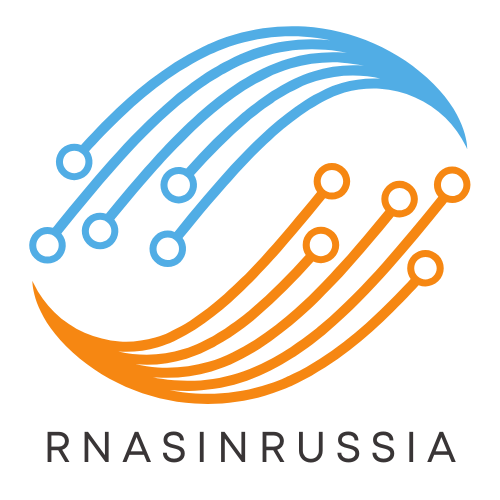Table of Contents
ToggleDiving into the world of coding can feel like trying to decipher an alien language while riding a unicycle. But fear not! Learning to write code is less about battling extraterrestrials and more about unlocking a treasure chest of creativity and problem-solving skills. With the right guidance, anyone can transform from a confused newbie into a coding wizard faster than you can say “syntax error.”
Understanding Programming Concepts
Coding forms the basis of programming, letting users instruct computers to perform specific tasks. It translates human logic into a language that machines understand.
What Is Coding?
Coding refers to writing instructions in a programming language. Various languages exist like Python, Java, and JavaScript, each serving distinct purposes. Python, for instance, is celebrated for its simplicity, making it an excellent choice for beginners. Java offers platform independence with wide application in enterprise solutions. JavaScript stands out in web development, enhancing interactivity on websites. By mastering coding, users gain the ability to create software, analyze data, and automate tasks effectively.
Importance of Learning to Code
Learning to code opens numerous opportunities in today’s digital world. Individuals can access high-demand job markets across fields like technology, finance, and healthcare. Understanding coding fosters problem-solving skills, enabling users to approach complex issues methodically. It promotes creativity as individuals transform their ideas into functional products. Knowledge of coding enhances collaboration with technical teams, providing a competitive edge in many professions. Educators emphasize the relevance of coding in daily life, as it shapes the technology that drives modern society.
Choosing the Right Programming Language

Selecting the appropriate programming language impacts the coding journey significantly. Beginners should focus on languages that offer ease of learning and versatility.
Popular Languages for Beginners
Python stands out as an ideal choice for newcomers. Its straightforward syntax simplifies coding concepts, making it easy to read and write. JavaScript follows closely, powering many web applications and enhancing interactivity. Ruby also appeals to beginners, offering an elegant syntax that promotes essential programming skills. Additionally, Scratch serves as an excellent visual programming tool for younger learners, making it fun to grasp coding fundamentals.
Factors to Consider When Choosing a Language
Different factors determine the best programming language for beginners. First, examine the intended application or project. For web development, JavaScript proves essential. Consider the community support available for each language. A strong community equips learners with resources and help. Next, evaluate job market demand in the desired area of competence. Languages like Python and Java consistently rank high in job listings. Lastly, reflect on personal interests; choosing a language that excites can motivate continued learning.
Setting Up Your Development Environment
Setting up a development environment is essential for coding effectively. A well-configured setup enhances productivity and allows beginners to focus on learning.
Installing Necessary Software
Installing necessary software starts with selecting a code editor. Beginners often choose Visual Studio Code or Sublime Text, both easy to use and widely supported. Next, installing the programming language interpreter or compiler is crucial. Python, for instance, requires installation from the official Python website. After that, setting up version control, such as Git, helps track changes over time. Beginners can also explore package managers to simplify installing libraries, which extend the functionality of their chosen language.
Recommended Tools and IDEs
Recommended tools and IDEs greatly assist beginners in learning to code. IDEs like PyCharm for Python and WebStorm for JavaScript provide built-in features that streamline coding tasks. Visual Studio offers comprehensive support for C# and .NET development. Beginners also benefit from text editors like Atom or Notepad++, which provide flexibility and simplicity. Online coding platforms, like Replit and CodePen, allow users to experiment without any installation. Accessing these tools creates a smoother learning curve and enhances the coding experience.
Writing Your First Program
Writing a simple program is often the first step in learning to code. Beginners typically start with the classic “Hello, World!” approach, which serves as a fundamental introduction to programming syntax.
Step-by-Step Guide to Hello World
- Open the code editor chosen in the earlier setup.
- Create a new file and name it
hello.pyfor Python orhello.jsfor JavaScript. - Type the command to display text. In Python, use
print("Hello, World!"). For JavaScript, useconsole.log("Hello, World!");. - Save the file.
- Run the program through the terminal or integrated development environment. Obtain output that reads “Hello, World!” This simple exercise exemplifies how code translates human language into machine instructions.
Common Errors and Debugging Tips
Errors occur frequently, particularly for beginners. A common mistake involves missing parentheses or quotation marks. Checking for these simple syntax errors can resolve many initial issues. Additionally, understanding error messages can help identify problems faster. Users should read the message carefully; it often indicates the line number with the issue. Commenting out sections of code can isolate problematic areas. Using built-in debugging tools in IDEs streamlines the process. Familiarizing oneself with debugging techniques ultimately strengthens coding skills, making future challenges easier to handle.
Learning Resources and Practices
Learning to code effectively relies on various resources and practices. Exploring these can significantly enhance the coding journey.
Online Courses and Tutorials
Platforms like Codecademy and Coursera offer interactive courses tailored for beginners. Many of these courses include video lectures, quizzes, and hands-on projects, making learning engaging. Additionally, free resources such as Khan Academy provide guided lessons in programming concepts. Beginners also benefit from Udemy’s extensive library of affordable courses. Exploring YouTube channels dedicated to coding can further supplement knowledge by providing real-time demonstrations. These online resources allow learners to progress at their own pace while gaining practical experience.
Books and Communities for Beginners
Books such as “Automate the Boring Stuff with Python” and “Eloquent JavaScript” serve as excellent starting points for beginners. These texts explain coding principles in an accessible way. Joining online communities on platforms like Stack Overflow and Reddit helps individuals connect with fellow learners. Active forums provide support, answer questions, and share resources. Local coding meetups and workshops provide opportunities for face-to-face interaction and networking. Accessing these communities promotes collaboration and motivation, fostering a sense of belonging in the coding world.
Embarking on a coding journey opens doors to creativity and problem-solving. With the right resources and guidance, anyone can transform from a novice to a skilled coder. Choosing a suitable programming language is crucial and can significantly enhance the learning experience.
Setting up an effective development environment lays the groundwork for productive coding sessions. Beginners should embrace the challenges of writing their first programs and learn to navigate common errors.
Engaging with online communities and utilizing various learning platforms can provide invaluable support. As technology continues to evolve, the skills acquired through coding will remain essential in today’s digital landscape.





